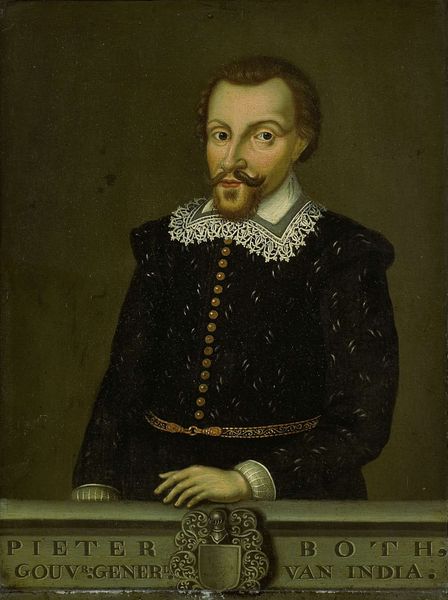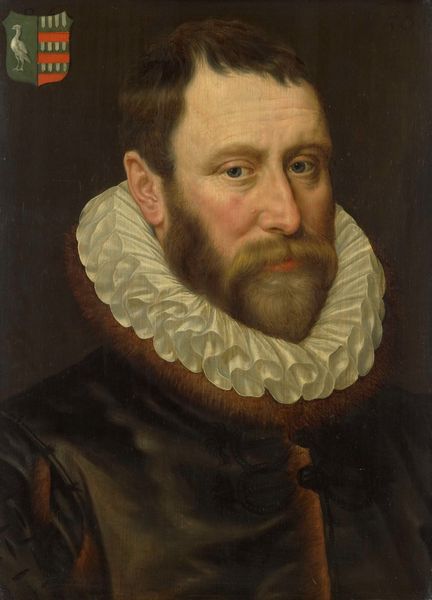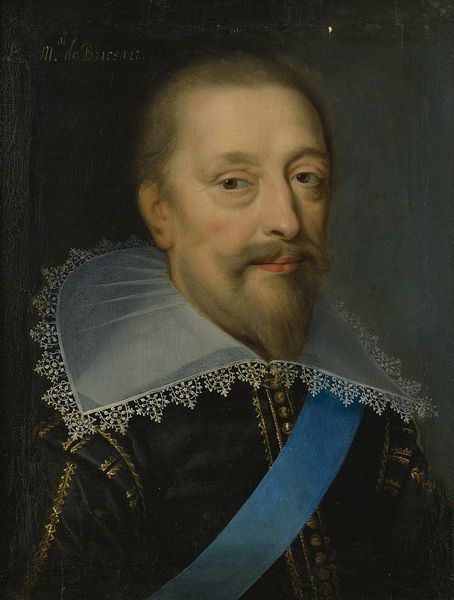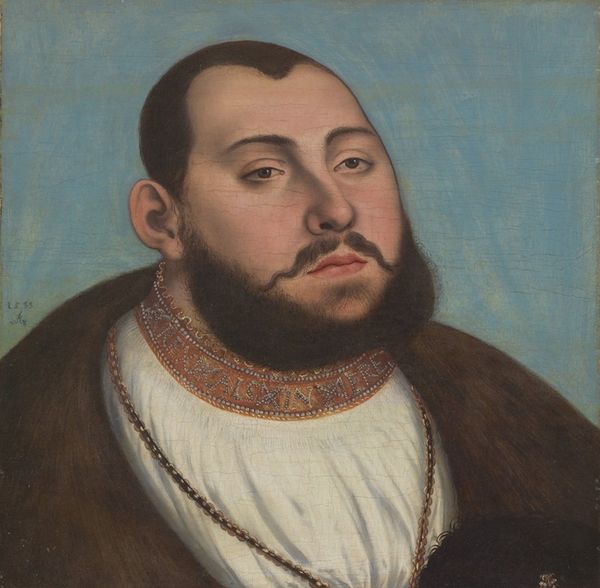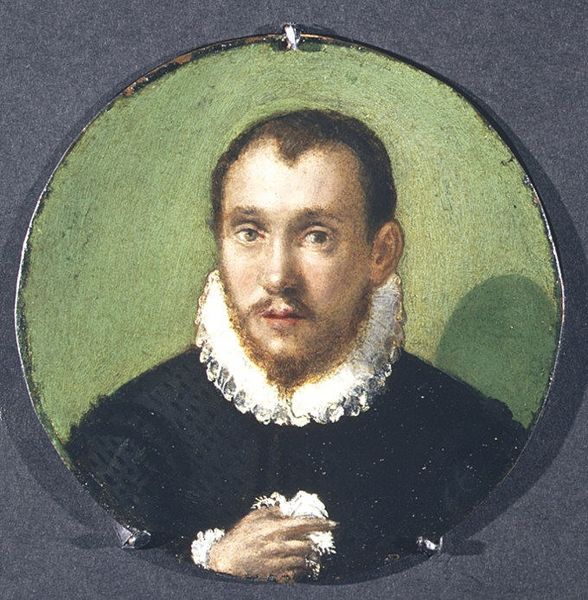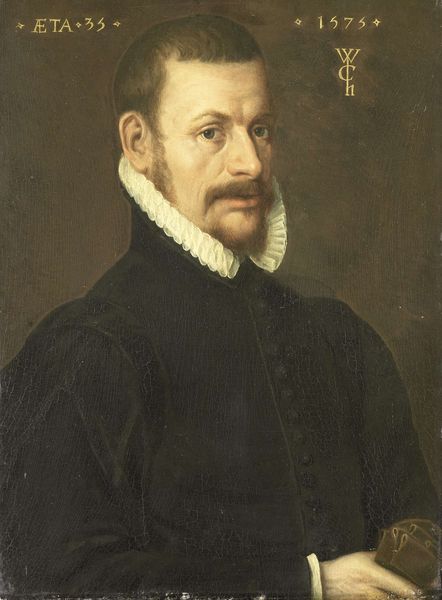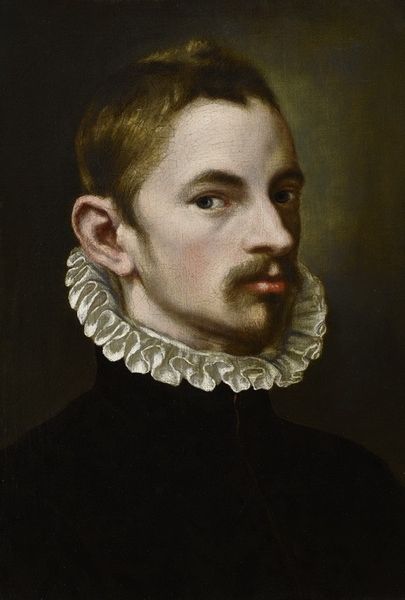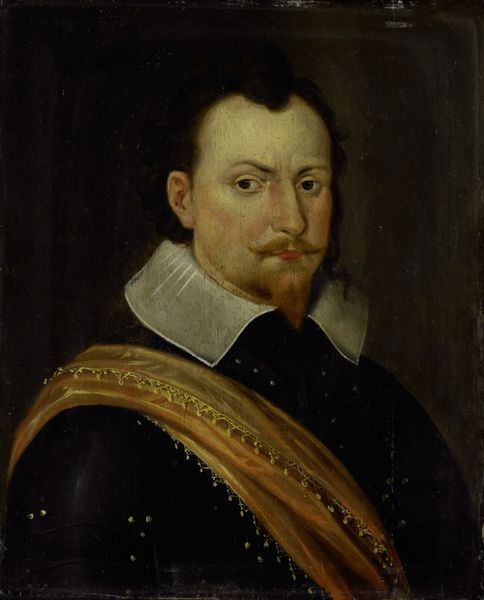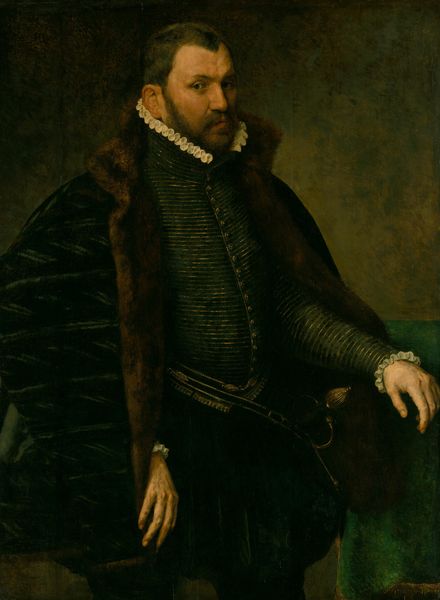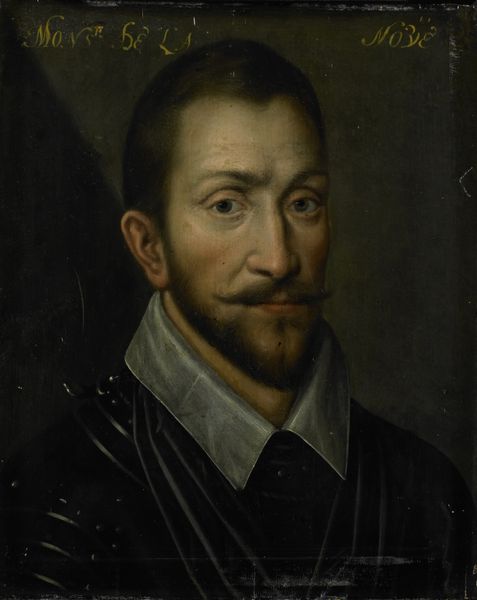
Portrait of a Man, Possibly an Architect or Geographer 1597
0:00
0:00
oil-paint
#
portrait
#
baroque
#
oil-paint
#
11_renaissance
#
history-painting
#
realism
Dimensions: 21.6 x 14.6 cm
Copyright: Public domain
Editor: We're looking at "Portrait of a Man, Possibly an Architect or Geographer," painted in 1597 by Peter Paul Rubens. It’s an oil painting held at the Met. There's a contemplative stillness to the subject’s gaze; he seems caught in a moment of deep thought. The intricate ruff and tools suggest a man of status. What do you see in this piece? Curator: For me, this portrait offers a glimpse into the construction of identity and status within the late 16th century European context. Rubens, even early in his career, displays a keen understanding of how objects, like the compass and the possible medal, are powerful symbols. These are not merely props; they’re carefully selected to communicate specific ideas about the sitter's profession, learning, and social standing. Editor: So, the tools define the man, or at least, how he wishes to be seen? Curator: Exactly! Think about the social and economic conditions of the time. There’s a growing merchant class, increasing urbanisation, and a greater emphasis on scientific inquiry. To commission a portrait like this was a statement of one's participation in and contribution to these developments. And look at where it is housed today, the Met, is a museum therefore another form of socio-political construction, right? Editor: That makes so much sense. It's not just about realism, it's about conveying a particular message, carefully constructed for public consumption and for today. Curator: Precisely. These are carefully crafted narratives for then and for us now. What do you make of that stark black background? Editor: Interesting! Initially I thought it bland and somewhat out-of-touch to have against the detailing on the clothes but you make a valid point regarding the context. Now I realize it has a purpose of portraying the persona of an individual of intellect and class. Curator: It is a clever piece of portraiture when we examine it beyond its obvious presentation of the individual. Editor: I totally agree. I hadn't considered how actively involved the subject would be in crafting this image! Thank you for your cultural perspectives regarding its history.
Comments
No comments
Be the first to comment and join the conversation on the ultimate creative platform.

